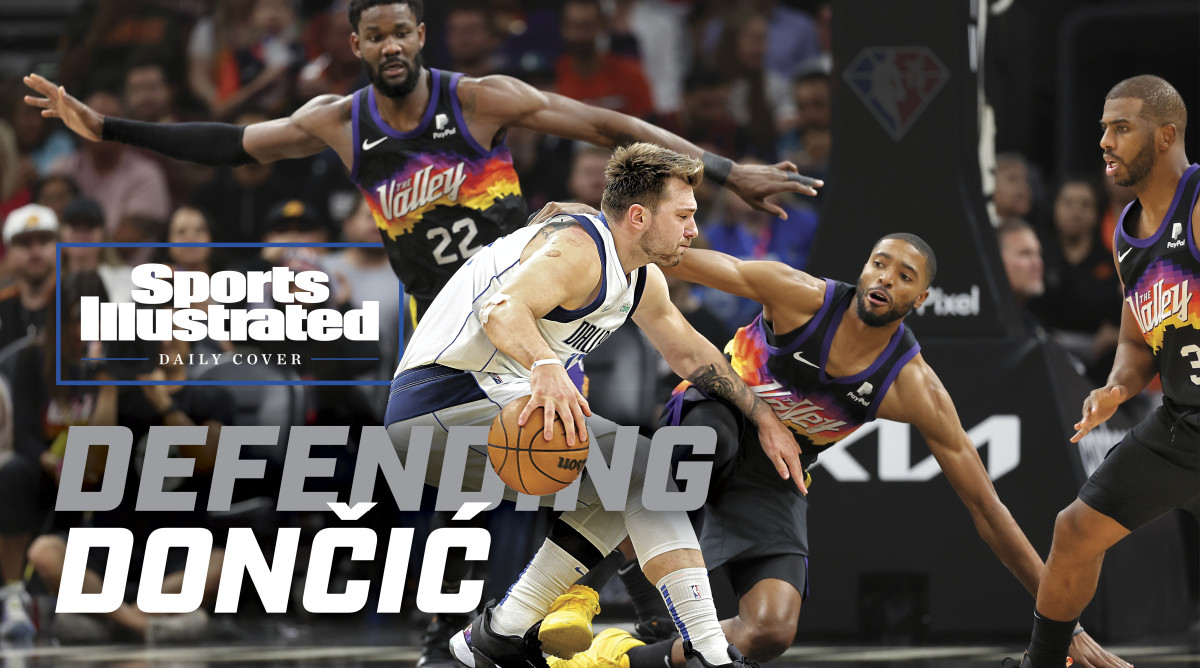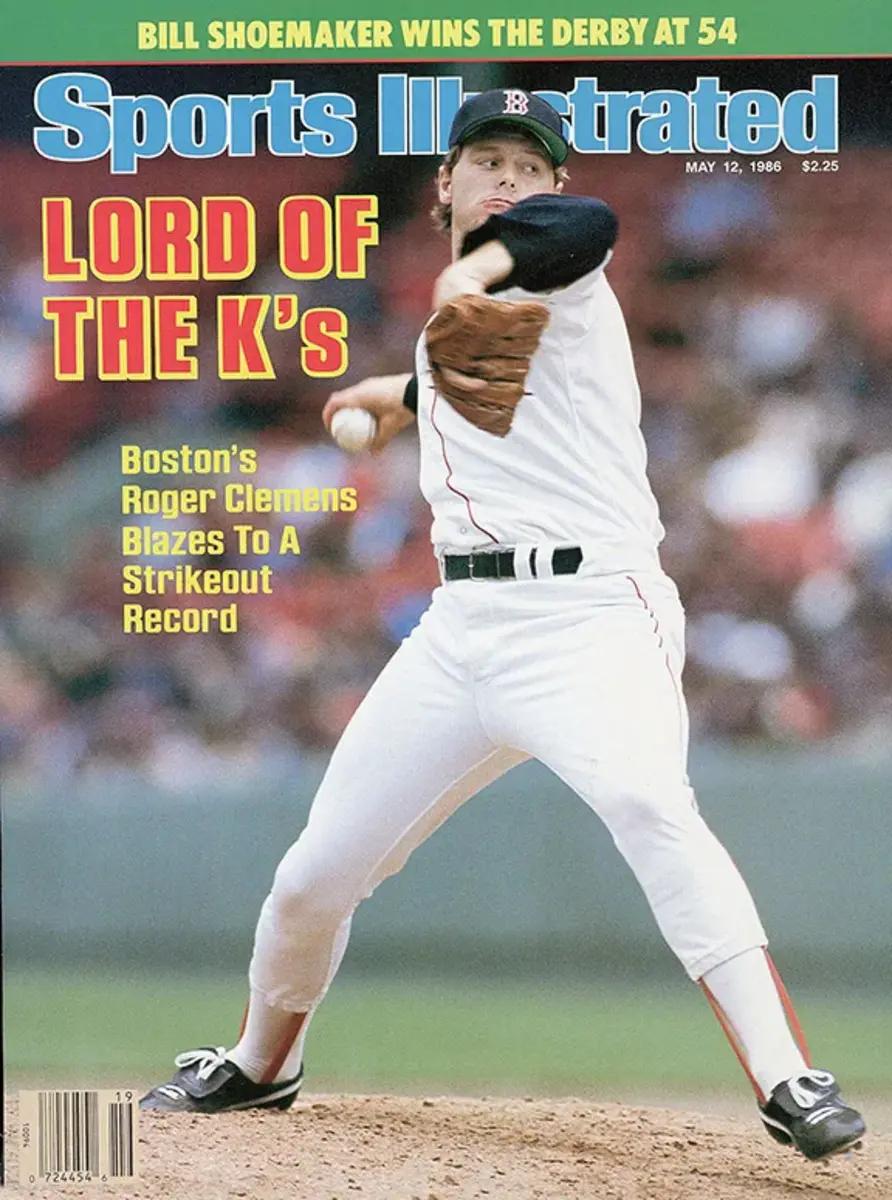SI:AM | No Ja? No Problem. Grizzlies Thump Warriors Without Morant
Good morning, I’m Dan Gartland. The NBA is more fun when the Grizzlies are good.
In today’s SI:AM:
📈 Post–NFL draft power rankings
The Grizz looked downright scary without their best player
The news that Ja Morant is not expected to return during the postseason was a gut punch to fans who hoped to see the most electrifying player in the league show out on the big stage. But it certainly wasn’t a problem for the Grizzlies in Game 5 against the Warriors last night.
Memphis won by 39, 134–95, but the final score doesn’t even illustrate how much of a blowout this was. The Grizzlies led 29–28 after a Klay Thompson three with 1:21 left in the first quarter and then went on a 48–22 run to take a 77–50 lead into the locker room. They led at one point by 55. It was ugly.
“It was awful,” Klay Thompson said after the game. “It was embarrassing. From the opening tip, they had great flow, and they were more aggressive than us. ... We all had the mindset that we were going to close it out tonight, but sometimes basketball [isn’t] an exact science, and we played like a shell of ourselves.”
Was Memphis’s performance an aberration or can it really succeed without Morant? The Warriors were without a key member of the team, coach Steve Kerr (who tested positive for COVID-19 before Game 4). But assistant Mike Brown, who is filling in for Kerr, is no slouch. He led the Cavaliers to the Finals in 2007 and has been with Golden State since ’16 (and has been hired to take over the Kings).
While it’s highly unlikely that the Grizzlies run the Warriors out of the gym again in Game 6 (or even a Game 7 back at home), it’s easy to forget just how good Memphis was without Morant during the regular season.
Morant missed 25 games during the regular season with knee and ankle injuries. In those games, Memphis went 20–5. That’s a 65-win pace over an 82-game season. It would be silly to suggest that the Grizzlies are actually better without Morant, but they are undeniably a different team with him sidelined and, remarkably, that version of the team is just as dangerous.
Chris Herring wrote last month about the Grizzlies’ performance without Morant and how they’re able to succeed with him in street clothes. Here are a few of the points he made:
- The Grizzlies are a better defensive team without Morant: “For all the leaps the acrobatic Morant has made offensively—a career-best mark from three and a personal-best 70% at the rim among them—his game leaves something to be desired on the defensive end, where his thin build and still-developing instincts hold him back,” Herring wrote.
- “The offense takes fewer risks and better care of the ball”: What makes Morant fun to watch is that he plays like his hair is on fire. But that can be a detriment at times. Without Morant, guys like Tyus Jones and Kyle Anderson take better care of the ball. In last night’s game, the Grizzlies’ turnover rate was 7.4%, compared to 20.4% for the Warriors.
- Opposing teams don’t know who to focus on defensively: The offense runs through Morant when he’s on the floor. Without him, any number of guys could step up to fill his shoes. Last night, Memphis had three 20-point scorers (Jones, Jaren Jackson Jr. and Desmond Bane), plus another four guys in double figures (Dillon Brooks, Brandon Clarke, De’Anthony Melton and Ziaire Williams).
The Grizzlies are still facing elimination in Game 6 back in San Francisco, but as they showed last night, it would be silly to count them out.
The best of Sports Illustrated

In today’s Daily Cover story, Rohan Nadkarni looks at the battle between Luka Dončić and the Suns’ elite defense:
“There is nothing enjoyable about trying to slow down one of the greatest scorers in postseason history. That’s the task for the No. 1–seeded Suns in their back-and-forth, hotly contested matchup with the Mavericks in the second round.”
The Bucks looked every bit like the defending champions in their comeback win over the Celtics in Game 5, Chris Mannix writes. … Here are Conor Orr’s postdraft NFL power rankings, with the usual suspects at the top. … Lia Assimakopoulos spoke with some of the WNBA’s off-court couples to learn how they make their relationships work.
Around the sports world
Sidney Crosby was knocked out of Game 5 against the Rangers by a dirty hit from Jacob Trouba and did not return. … Nets GM Sean Marks was vague about Kyrie Irving’s future in Brooklyn. … A guy who lost a fantasy football bet entered a qualifier for the U.S. Open and shot a 112. … Falcons coach Arthur Smith says Marcus Mariota will be their Week 1 starter. … Ray Romano will play Jim Valvano in an upcoming movie about the coach’s life. … Sonny Leon, the jockey who rode Rich Strike to victory in the Kentucky Derby, is serving a four-day suspension this week for careless riding in Ohio.
The top five...
… things I saw last night:
5. Claude Giroux’s deke and goal to seal the Panthers’ win over the Capitals
4. Nikola Jokić arriving by horse-drawn buggy to accept his MVP award in Serbia
3. Darby Allin’s death-defying leap from a ladder on AEW Dynamite
2. Jrue Holiday’s clutch block with 6.6 seconds left
1. Holiday’s steal immediately afterward to seal the game
SIQ
While researching Reid Detmers’s odd two-strikeout no-hitter yesterday, I came across an even odder game. In 1917, Ernie Shore was on the mound for all 27 outs of a 4–0 Red Sox win over the Washington Senators and retired every batter he faced in order. Why wasn’t it a perfect game?
Yesterday’s SIQ: When Senators pitcher Walter Johnson threw 12 scoreless innings against the Yankees, on May 11, 1919, at one point retiring 28 batters in a row, why was the game halted and declared a tie?
Answer: A mistake by the umpire. But, after learning some background information, it’s tough to blame him.
Until that year, Sunday baseball games were illegal under New York state law. Some folks were occasionally able to hold games on Sundays at local parks without incident, but professional games were a different story. The managers of the Reds and Giants were actually arrested for trying to play a game on a Sunday at the Polo Grounds in 1917.
After the start of the season was delayed by World War I, the Yankees-Senators game in question was just the second legal Sunday game in Polo Grounds history. (Yankee Stadium wouldn’t open until four years later.) Some 35,000 fans had come out to see the Giants the previous week, while 25,000 showed up at Ebbets Field across the river in Brooklyn. Only 3,000 saw the Yankees-Senators pitchers’ duel.
According to the Society for American Baseball Research, the new law permitting Sunday baseball required that games start after 2 p.m. The Yankees-Senators game was scheduled to start at 3 but didn’t actually begin until about 3:25. As the game dragged on, the delay proved to be costly.
The umpire, Bill Dineen, called both managers out on the field at the end of the 12th inning and told them that he had been informed by Yankees president Jacob Ruppert that the new Sunday baseball law required games to finish by 6 p.m., and so he was ending the game as a 0–0 tie. Senators manager Clark Griffith reportedly tried to convince Dineen they should simply wind back the hands of the stadium’s clock, like members of Congress would do when blowing past their deadlines. Dineen didn’t go for it.
The problem is that the law included no such curfew. Ruppert was mistaken, and Dineen didn’t know any better, so he ended the game.
Though he wasn’t credited with a win (or a loss), Johnson’s pitching line was remarkable. He allowed two hits and one walk while striking out nine over 12 scoreless innings. His 28 consecutive batters retired are a record for a single game. (The last batter he retired was George Halas, the future Bears owner, who was playing one of his 12 games in the majors.)
The Yankees’ starter, Jack Quinn, also went 12 innings and didn’t allow a run, although he did give up 10 hits and issue four walks.
New York and Washington played again the next day, but that one also ended in a tie, 4–4 after 15 innings, due to darkness.
From the Vault: May 12, 1986

Roger Clemens’s start against the Mariners on April 29, 1986, is one of the best pitching performances in baseball history. How else would one game from the first month of the season land a guy on the cover of SI?
That night, Clemens became the first pitcher in major league history to strike out 20 batters in a nine-inning game—and he did so without walking anyone. Clemens was damn near unhittable, throwing 97 strikes, only 29 of which batters managed to make contact with (19 fouled off and 10 put in play). Clemens allowed three hits, singles by Spike Owen and Danny Tartabull, and a solo home run by Gorman Thomas that accounted for the only Seattle run of the night.
What made Clemens’s night even more remarkable was that he was not far removed from a shoulder surgery. As Peter Gammons wrote in his cover story, Clemens was only starting to return to full strength:
“Clemens began the season with two moderately successful starts, striking out two and seven batters, respectively. He was pitching against the Tigers on April 22 when he told himself, ‘Now’s the time to air it out.’ He struck out 10 in 6 2/3 innings. ‘I knew then,’ says Clemens, ‘that I was back where I thought I was headed two years ago. I also think I’m throwing better now than I ever did.’”
Incredibly, that game wasn’t the only time Clemens would strike out 20 batters. On Sept. 18, 1996, in one of his final starts with Boston, Clemens retired 20 Tigers via the strikeout, again not allowing a walk. In a brief item on the game in that week’s SI, Gerry Callahan referred to Clemens as Boston’s “aging ace.” He would go on to pitch for over a decade more.
Check out more of SI’s archives and historic images at vault.si.com.
Sports Illustrated may receive compensation for some links to products and services on this website.
